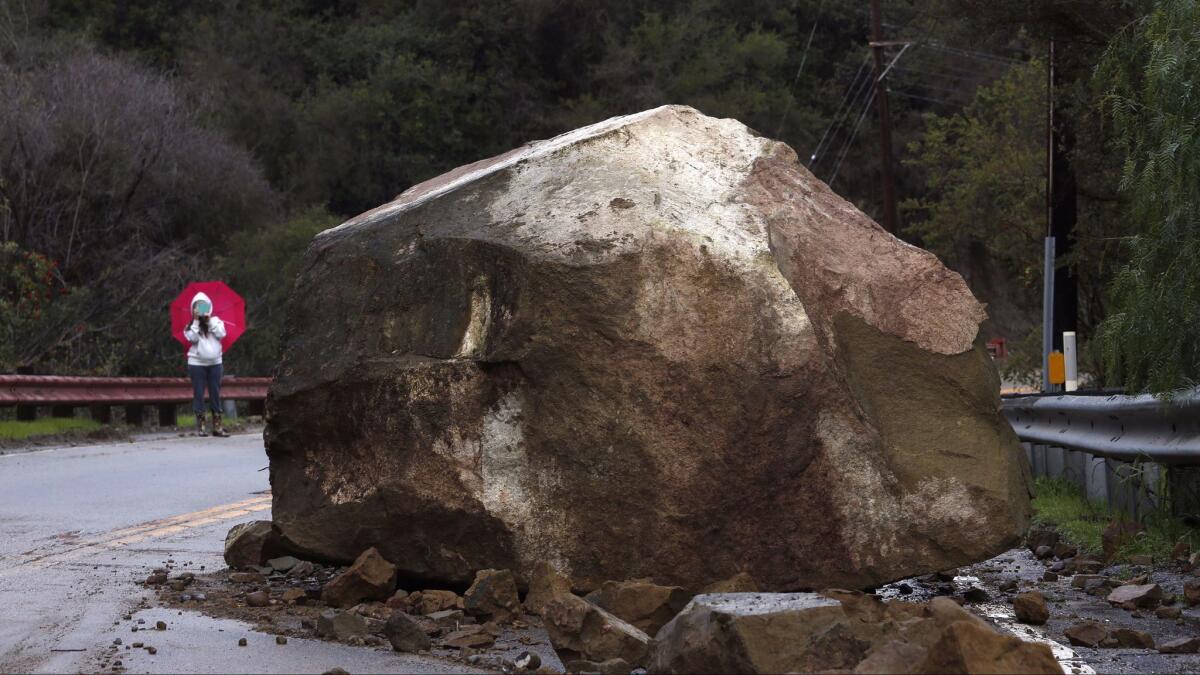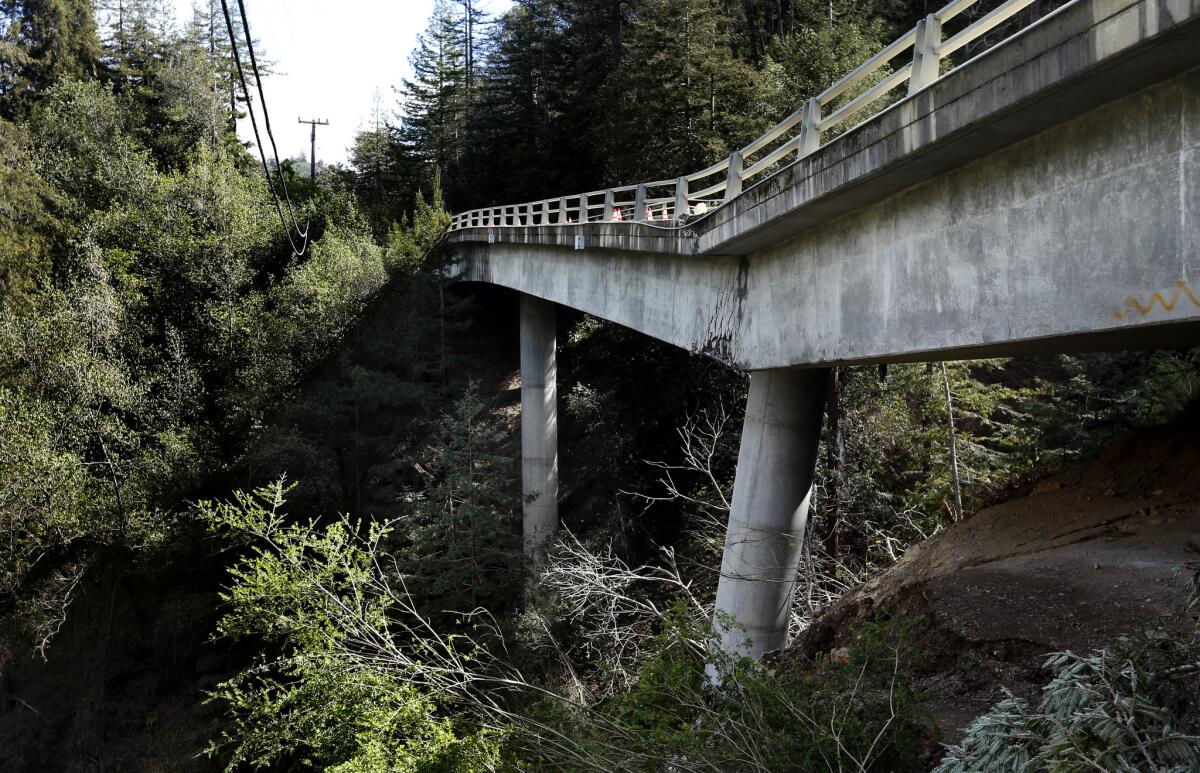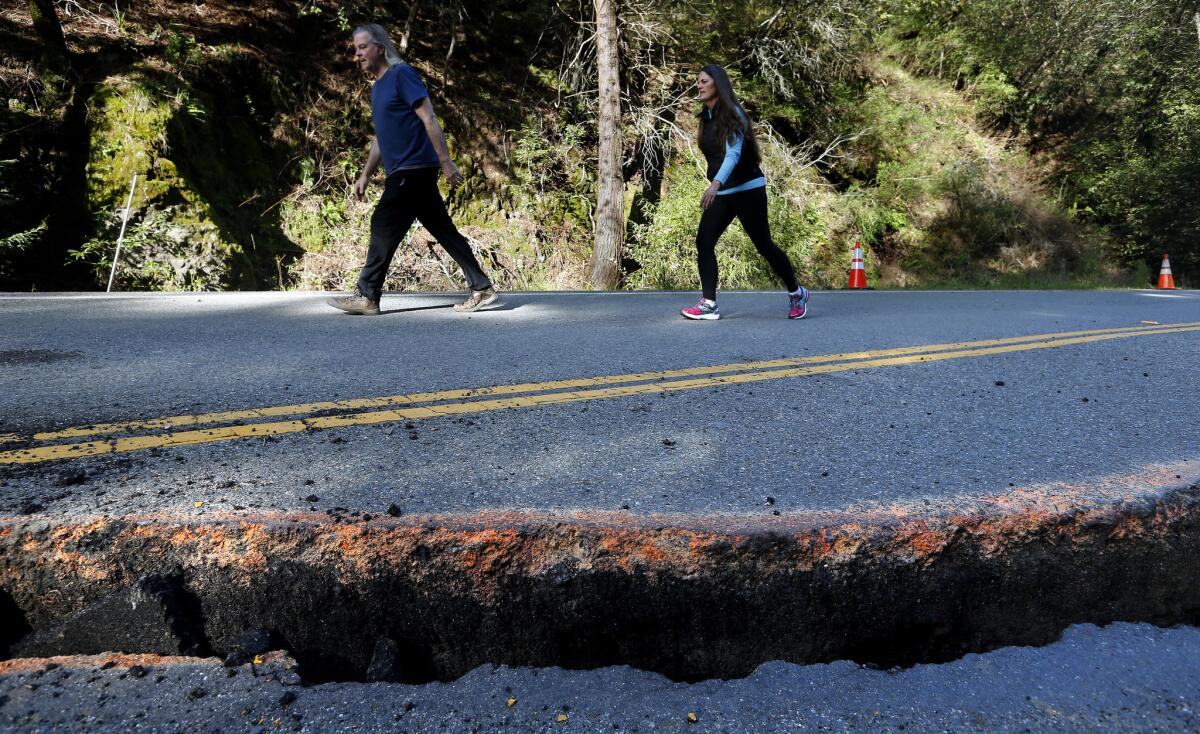A massive landslide that closed Highway 1 is part of a $1-billion problem for California
The massive landslide south of Big Sur that closed Highway 1 is one dramatic piece of a larger road repair challenge facing California in the wake of this winter’s record rains.
Across the state, highways, freeways and local roads need major work. Here’s a breakdown:
loud boom, cloud of dust
Suddenly, Highway 1 is impassable
With a loud boom and a cloud of dust, part of a mountainside slid into the Pacific Ocean on Saturday night, swallowing roughly a third of a mile of Highway 1 and rearranging more of Big Sur’s dramatic coastline.
Aerial photos and video of the massive landslide show a huge tongue of earth reaching into the sea in the Mud Creek area of southern Big Sur.
It’s unclear when Highway 1 will reopen, and Caltrans is still determining a plan of attack.

NORTHERN CALIFORNIA’S FLOOD-DAMAGED ARTERIES
$1 billion and counting
In April, officials estimated it will cost more than $860 million to repair the state’s roads, bridges and highways damaged from this winter’s storms.
That number is now estimated to be more than $1 billion.
Of Caltrans’ dozen districts, repair work in District 3 in Northern California is expected to cost the most. The district, which includes Sacramento, Yolo, Yuba and Butte counties, experienced repeated floods in January and February as multiple rivers were overwhelmed with powerful storms. Repairs there are estimated to cost more than $360 million, an April Caltrans assessment shows.
The two main highways through the Sierra Nevada — Interstate 80 and U.S. 50 — were repeatedly closed due to heavy snow and blizzard conditions. The pounding storms left both roads with significant damage.

BIG REPAIR JOBS ACROSS THE STATE
A wrecked bridge, a road-choking boulder
Big Sur bridge: Caltrans faces an even costlier project in Monterey County, where the Pfeiffer Canyon Bridge in Big Sur was destabilized earlier this year after a mudslide. It will cost Caltrans at least $26.5 million to replace it, the agency estimated. Officials said a new bridge could be opened by October.
Santa Clara County: The most expensive job, however, is in Caltrans District 4 in Santa Clara County, where a 200-foot-long section of Highway 35 slid downhill more than 50 feet. A permanent rebuild of the highway and stabilization of the hillside is estimated to cost more than $29.5 million.
L.A. County: In Los Angeles County, emergency and permanent repair costs for all the damage will total more than $55 million, according to a Caltrans preliminary damage assessment. Nearly half of that cost will go toward one project on Highway 27, also known as Topanga Canyon Boulevard. During a weekend in January, a wave of massive boulders and mud crashed onto two sections of the road about a mile apart, forcing a 3.5-mile closure of the winding pass through the Santa Monica Mountains between Pacific Coast Highway and Grandview Drive.

THE LARGER PROBLEM
A bold, controversial plan to fix California’s roads
Even before the wet winter, there were concerns about the grave condition of California’s roads. And that prompted a bold and controversial plan of attack.
California motorists will start paying higher gasoline and diesel taxes on Nov. 1 under legislation signed last month by Gov. Jerry Brown to provide $5.2 billion annually for road and bridge repairs and expanded mass transit in the state.
The plan, which also includes new fees when vehicles are registered, has sparked a significant backlash. Opponents have launched a recall campaign against one state senator and are talking about a possible initiative to roll back and control the taxes and fees. Other lawmakers said they received harassing phone calls about their votes on the bill.
But state officials hope the sight of construction crews on long-neglected highways and roads will compensate for pain in the pocketbook.
Sign up for Essential California
The most important California stories and recommendations in your inbox every morning.
You may occasionally receive promotional content from the Los Angeles Times.








